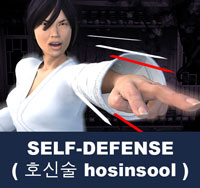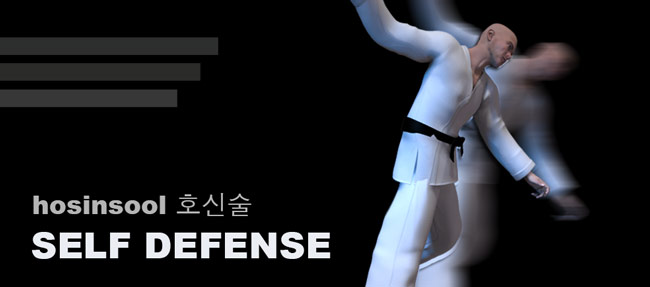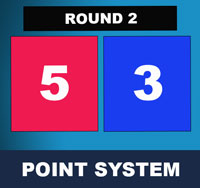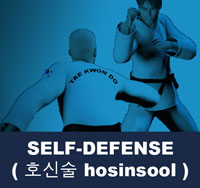Taekwondo 태권도Taekwondo Preschool
When you reach senior belt you are expected to guide the junior belts when they are beginning Taekwondo such as showing by example. To advance from one rank to the next, students typically complete promotion tests in which they demonstrate their proficiency in the various aspects of the art before a panel of judges or their teacher. View Taekwondo belt levels »

Throwing
( 넘기기 neomgigi )
Taekwondo self-defense competition provides an opportunity for students to display their understanding of Taekwondo self-defense applications and the ability to put together their own team choreography.

Throwing down or Tripping up ( 넘기기 neomgigi ) is for a grappling technique that involves off-balancing or lifting an opponent, and throwing them to the ground. Throws usually involve a rotating motion, the practitioner performing the throw disconnects with the opponent, and ends balanced and on their feet as opposed to a takedown where both finish on the ground. Throws can however also be followed into a top position, in which case the person executing the throw does not disengage from the opponent. Certain throwing techniques called sacrifice throws involve putting oneself in a potentially disadvantageous position, such as on the ground, in order to execute a throw.
Types of Throws ( 넘기기 neomgigi )
There are several major types of throw, among Asian martial arts, judo has the most developed throwing techniques and throws are considered its specialty.
Tripping-up Technique or Sweeping Technique ( 걸어넘기기 georeo-neomgigi )
- Ankle Tripping-up Technique ( 발목 걸어넘기기 balmok-georeo-neomgigi )
- Inner Knee Tripping-up Technique ( 오금 걸어넘기기 ogeum-georeo-neomgigi )
Throwing-down Technique ( 들어넘기기 deureo-neomgigi )
- Inner Knee Throwing down Technique ( 오금 들어넘기기 ogeum-deureo-neomgigi )
Most throws are named by describing the circumvention point of the throw (ex. hip throw, shoulder throw, wrist throw etc.), or the nature of effect of the throw on the opponent with variations are given descriptive names. Many western martial art dojos have given English names to the throws feeling that it is easier for English speaking students to remember the names of throws. Throws are divided into six categories-hand techniques, leg techniques, hip techniques, shoulder techniques, as well as sacrifice throws to the rear and side.
Shoulder Throw
A shoulder throw involves throwing an opponent over the shoulder. It can be performed by lifting the opponent from the ground or by upsetting the opponents balance first and then pulling the opponent over the shoulder afterwards.
Leg throws, reaps, and trips
In a leg reap, the attacker uses one of their legs to reap one or both of their opponent's legs off the ground. Generally the opponent's weight is placed on the leg that is reaped away. This coupled with the attacker controlling the opponent's body with their hands causes the opponent to fall over.
Somewhat similar to leg reaps involve a hooking or lifting action with the attacking leg instead of a reaping action. The border between the two types of throw can be unclear, and many throws will exhibit characteristics of both reaps and trips, however, the difference is that a reap is one smooth move, like that of a scythe, whereas a hook is pulling the opponents leg up first, and then swinging it away.
Hip Throws
A hip throw involves using the thrower's hip as a pivot point, by placing the hip in a lower position than an opponent's center of gravity. There are several types of hip throws.
Sacrifice Throws
Sacrifice throws require the thrower to move into a potentially disadvantageous position in order to be executed, such as falling to the ground. The momentum of the falling body adds power to the throw and requires comparatively little strength, compared to the effect.
Pick-ups
Pickups involve lifting the opponent off the ground and then bringing them down again. Common pick-ups are lifting variations of the double leg takedown and the suplex from wrestling, in which the attacker lifts their opponents body vertically and throws the opponent over their own center of gravity while executing a back fall (usually accompanied by a back arch).

Highlight World Taekwondo (WT) Tournament Point System
Under World Taekwondo (WT) and Olympic rules, sparring ( 겨루기 gyeorugi ) is a full-contact event and takes place between two competitors in an area measuring 8 meters square. Points are awarded for permitted, accurate, and powerful techniques to the legal scoring areas; light contact does not score any points. The only techniques allowed are kicks ( 차기 chagi ) (delivering a strike using an area of the foot below the ankle) and punches ( 지르기 jireugi ) (delivering a strike using the closed fist). The referee can give penalties at any time for rule-breaking, such as hitting an area not recognized as a target, usually the legs or groin ( 샅 sat ). View Tournament Point System »
* Please see a certified Master Instructor ( 사범님 sabeomnim ) for training. Proper guidance and instructions are needed to ensure safe training.

Related Articles
Self-Defense ( 호신술 hosinsool ) is to protect yourself from being attacked from would-be aggressors. It is a countermeasure that involves defending the health and well-being of oneself from harm and is designed primarily to cause injury or quickly incapacitate an attacker, in addition to being a deterrent against them. Attackers are typically larger, stronger, and are often armed or have an accomplice. With proper execution attackers may be incapacitated with a single blow, which lessens the number of attacks with multiple people. View Self-Defense ( 호신술 hosinsool ) »
Risk of injury can be reduced by completing an effective warm up consisting of a heart raiser to get your pulse up, followed by sport specific dynamic stretches (stretches whilst moving). Please follow the guidance of a certified Master Instructor or trainer when doing sports related activities. Depending on the intensity of the exercise, cooling down can involve a slow jog or walk, or with lower intensities, stretching can be used. Cooling down allows the heart rate to return to its resting rate. View more information on Warming Up and Cooling Down ».
This article uses material from the Wikipedia articles "Warming Up" and "Cooling Down", which is released under the Creative Commons Attribution-Share-Alike License 3.0.
RESOURCES
This article uses material from the Wikipedia article "Throw (grappling)", which is released under the Creative Commons Attribution-Share-Alike License 3.0.


















